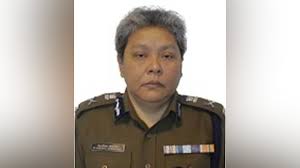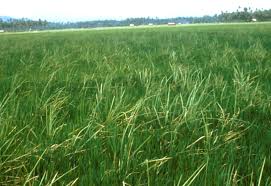Today’s Current Affairs: 13th May 2024 for UPSC IAS exams, State PSC exams, SSC CGL, State SSC, RRB, Railways, Banking Exam & IBPS, etc
Table of Contents
India, France Set For 7th Joint Military Exercise Shakti:

India and France are set to conduct the 7th edition of the Joint Military Exercise ‘Shakti’ between May 13-26, 2024, in the Umroi region of Meghalaya.
- This version of the drill builds on the strong defense ties that have been gaining a lot of strength, as shown by Chief of Defence Staff General Anil Chauhan’s trip to France.
- The primary aim of the upcoming joint exercise is to improve the joint military capabilities of India and France to carry out Multi-Domain Operations in a Sub-Conventional scenario.
- In modern warfare, where conventional and unconventional tactics are used in many areas, such as the air, land, sea, and cyberspace, these kinds of activities are very important.
- Joint Military Exercise Shakti is a bilateral exercise conducted between the Indian Army and the French Army.
- Established in 2011, the exercise is focused on improving military cooperation, counter-terrorism tactics, and interoperability between the two forces.
Meghalaya’s First Woman DGP:

Senior IPS Officer Idashisha Nongrang has been named Meghalaya’s first woman Director General of Police (DGP).
- Chief Minister Conrad K Sangma officially announced this landmark decision, noting it as a significant moment for the state, as Nongrang is also the first tribal woman to ascend to this prestigious rank.
- The selection of the new police chief was overseen by the Meghalaya Security Commission, chaired by Chief Minister Sangma.
- From a shortlist approved by the Union Public Service Commission (UPSC) comprising three candidates, Nongrang was chosen to assume the role.
- Her appointment follows the impending retirement of the current DGP, LR Bishnoi, scheduled for May 19, 2024.
Bakane Disease:

The Punjab Agricultural University (PAU), Ludhiana, has developed biocontrol agent Trichoderma asperellum (2% WP), and registered it with the Central Insecticides Board and Registration Committee (CIBRC)
- This registration aims to manage Foot Rot (also known as Bakane disease) in Basmati rice, which has been a persistent problem in the region, causing considerable losses to farmers and threatening the state’s export prospects.
- Foot Rot, also known as Bakanae Disease, is a significant fungal disease affecting rice, particularly the Basmati variety.
- Foot Rot is caused by the fungus Gibberella fujikuroi (also known as Fusarium monoliforme).
- It primarily affects the roots and basal stems of rice plants.
- The disease is characterized by:
- Abnormal elongation of seedlings
- Seedlings turning pale yellow
- Eventually, the seedlings dry up and die
Shinku La Tunnel:

The Border Roads Organisation will construct the world’s highest tunnel at Shinku La Pass at 16,580 feet to connect Himachal to Zanskar valley in Ladakh.
- The developments come at a time when the military standoff between India and China in eastern Ladakh has entered its fifth year, with no indication of a resolution to the outstanding problems along the contested Line of Actual Control (LAC).
- The Shinku La tunnel is a significant infrastructure project aimed at enhancing connectivity in the border areas of Ladakh.
- The tunnel will be constructed at an altitude of over 16,500 feet.
- It is situated on the Nimu-Padam-Darcha Road link, which connects Ladakh and Himachal Pradesh.
- The construction of this tunnel is expected to be completed by 2025.
- The primary purpose of the Shinku La tunnel is to provide all-weather connectivity to the border areas of Ladakh.
- It will facilitate the swift movement of troops and heavy weaponry to forward areas.
- It will provide the Indian military access to the border areas of Ladakh from the Himachal side
- The completion of this project will improve the financial condition of Zanskar Valley residents by giving impetus to tourism.
- It will significantly enhance connectivity and security in the region.
Neural Processing Units (NPUs) : Apple

Apple launched the M4 chip with the iPad Pro. Its key feature includes a 16-core Neural Engine which is equivalent to an NPU.
- Neural Processing Units (NPUs) are specialized processors designed for accelerating machine learning operations, crucial for AI tasks like speech recognition and image processing.
- Neural Processing Units (NPUs) are specialized processors designed to accelerate neural network processes, crucial for machine learning algorithms.
- They excel in AI-related tasks like speech recognition and image processing, enabling efficient handling of complex operations in consumer gadgets.
- NPUs play a crucial role in deploying AI-powered applications directly on hardware, enhancing performance in various devices.
Kamikaze Drone:

In the ongoing conflict in Ukraine, Russia’s utilization of the Lancet Kamikaze drone, which incorporates American AI technology, highlights complex global supply chain issues.
- Kamikaze drone are small unmanned aircraft packed with explosives that can be flown directly at a tank or a group of troops that are destroyed when it hits the target and explodes. These are also called as Switchblade drones.
- The name comes from the World War 2 era’s feared Japanese kamikaze pilots, who conducted suicide attacks by intentionally crashing their explosive filled aircraft into enemy targets.
- The modern drone versions have the capability of surpassing traditional defences to strike their targets and are also cheaper than their larger counterparts.
- The small lethal drones are difficult to detect on radar, and through the use of facial recognition, can be programmed to hit targets without human intervention.
- Although the US Kamikaze might be the most advanced in this class of drones, Russia, China, Israel, Iran and Turkey all have some versions of it.
United Nations Forum On Forests : 19th Session

Delegates at 19th Session of the United Nations Forum on Forests (UNFF19) entered into informal negotiations over the draft texts of the High-Level Declaration
- United Nations Forum on Forests was established in 2000 by the UN Economic and Social Council of the United Nations (ECOSOC). It promotes the management, conservation, and sustainable development of all types of forests.
- The Forum meets annually at the UN Headquarters in New York, bringing together representatives of all member states and forest-related agencies for high-level dialogue on technical matters in odd years and policy matters in even years.
- The forum has universal membership, and is composed of all Member States of the United Nations and specialized agencies.
- India is a founding member of UNFF.
- The declaration of the 19th session aims to achieve agreement on a high-level political commitment to forest protection, with specific actions for effective implementation of the UN Strategic Plan for Forests (UNSPF) by UNFF and its stakeholders.
Deadbots : New Study

A new study urges caution in the development of Artificial Intelligence (AI) chatbots designed to mimic deceased loved ones, known as ‘deadbots’.
- Deadbots are also known as griefbots, are AI-enabled digital representations of departed loved ones.
- These chatbots simulate their language patterns and personality traits using their digital footprint, like emails, social media posts and even voice recordings, to create a conversational AI that reflects their personality.
- Researchers have warned that these chatbots, while potentially comforting, could lead to psychological distress if not designed with safety in mind.
- Solutions that might be enthusiastically adopted in one cultural context could be completely dismissed in another.
Auroras:

The night sky was lit up by northern lights, or aurora borealis, at Hanle village in Ladakh.
- Auroras are essentially natural lights that appear as bright, swirling curtains in the night sky and can be seen in a range of colours, including blue, red, yellow, green, and orange.
- These lights primarily appear near the poles of both the northern and southern hemispheres all year round but sometimes they expand to lower latitudes.
- These are called as aurora borealis in the north and in the south, it is known as the aurora australis.
- It is due to activity on the surface of the Sun. The star continuously releases a stream of charged particles, mainly electrons and protons, and magnetic fields called the solar wind.
- As the solar wind approaches the Earth, it is deflected by the planet’s magnetic field, which acts like a protective shield.
- However, some of the charged particles are trapped in the magnetic field and they travel down the magnetic field lines at the north and south poles into the upper atmosphere of the Earth.
- These particles then interact with different gases present there, resulting in tiny flashes that light up the night sky.
- When solar wind particles collide with oxygen, a green colour light is produced. Interaction with nitrogen produces shades of blue and purple.
Kawasaki Disease : Successfully Treated

Two baby girls diagnosed with Kawasaki disease were successfully treated at Coimbatore Medical College and Hospital (CMCH) very recently.
- Kawasaki Disease is a rare heart condition that causes a high fever and inflammation of the blood vessels.
- It usually affects children under the age of 5.
- It’s one of the leading causes of heart disease in kids.
- The condition causes the immune system to attack blood vessels, which become inflamed and swollen.
- It tends to affect the coronary arteries, which carry blood to the heart muscle.
- It can also cause problems with lymph nodes, skin, and the lining of a child’s mouth, nose, and throat.
- Clinical signs include fever, rash, swelling of the hands and feet, irritation and redness of the whites of the eyes, swollen lymph glands in the neck, and irritation and inflammation of the mouth, lips, and throat.
- The disease was first described in Japan by Tomisaku Kawasaki in 1967, and the first cases outside of Japan were reported in Hawaii in 1976.
- The cause of Kawasaki disease is unknown, although more cases happen in late winter and early spring.




